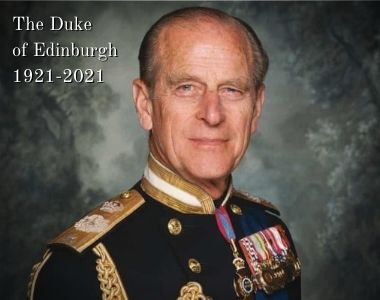75 years ago today - HMS EXETER was lost in the Battle of the Sunda Strait fighting against an overwhelming Japanese force.
HMS EXETER, and her ship’s company, were battle scarred veterans when she deployed to the Far East in 1941. She had limped back to Devonport in January 1940 after carrying out temporary repairs in the Falkland Islands following the Battle of the River Plate and the sinking of the Graf Spee.
The work to refit her ready for sea took just over 12 months and included the replacement of her single 4 inch AA guns with twin mountings: a new catapult and tripod masts. Her new captain, Captain W N T Beckett (known as ‘Joe’ Beckett after a famous boxer of the time) was an experienced officer with a distinguished career but sadly died, of complications arising from wounds sustained when commanding Coastal Motor Boats on the Dwina River in Russia in 1919. His death occurred on the day that EXETER was to re-commission. He was replaced by Captain O L Gordon. EXETER left Devonport on 24 March 1941, her refit was not quite complete but the severity of the German air raids on Plymouth made it sensible that the work be completed elsewhere. She joined the First Cruiser Squadron at Scapa Flow to work up and then conducted a patrol in the Denmark Strait.
On 22 May she joined troop convoy WS 8B as an escort but, by the 25th, was the only remaining warship with the convoy. The other ships, including Captain Vian’s destroyers, had been withdrawn to assist in the hunt for the German battleship BISMARCK. At one stage convoy WS 8B passed less than 100 miles ahead of the BISMARCK and EXETER was, for a brief time, the closest British warship to the BISMARK. She escorted the convoy to Freetown, and then on to the Cape and Aden. She returned to Durban and spent the next few months on convoy escort duty between Aden and Durban. When Japan entered the war, Exeter was escorting a convoy off Burma heading for Rangoon. She was immediately ordered to join the battlecruiser REPULSE and battleship PRINCE OF WALES in Singapore.
However, whilst still en route she received the news that, on the 10th December 1941, both ships had been engaged and sunk by Japanese torpedo bombers in the South China Sea. Diverted to Singapore she then escorted convoys of troops and stores between Singapore, India and off the coast of Java. In February 1942, while in Tanjong Priok, she was detailed off to join the Allied American, British, Dutch and Australian (ABDA) task force at Sourabaya. She sailed at 14.00 on 25th February in company with the Australian cruiser PERTH and the British destroyers ELECTRA, ENCOUNTER and JUPITER, leaving harbour while the port was under attack. The small force reached Sourabaya at midday on the 26th February and, after negotiating a minefield in the approaches, went alongside at 16.00. They sailed again shortly after joined by Dutch ships, JAVA and DE RUYTER and the American ship HOUSTON to search for the Japanese invasion forces.
The force was returning to harbour to fuel on the 27th when a report was received that Japanese units had been spotted. The ships immediately turned and headed back to sea to intercept the enemy.
The Japanese force comprised five Sendai Class cruisers (with seven 5.5 inch guns each) and fourteen destroyers in two groups. These were joined shortly by two Myoko Class cruisers (each with ten 8-inch guns). The Allied force comprised five cruisers and nine destroyers. The Japanese opened fire at a range of 28,000 yards with EXETER and HOUSTON, the only two Allied cruisers with 8-inch guns, replied at a range of 27,000 yards. The Japanese had the benefit of air cover and air spotting for their gunfire. EXETER was second in the line and was hit at 17.00 by an 8-inch shell which went through the starboard after 4-inch gun mounting and into the boiler room, killing 14 men and knocking out six boilers, leaving the ship functioning with only two working boilers. She lost speed and fell out of the line, the following ships lost station in the confusion. The ENCOUNTER and JUPITER at once made smoke to protect her, whilst the ELECTRA closed three Japanese destroyers just 6,000 yards away. ELECTRA was overwhelmed and lost. EXETER’s speed fell to 5 knots but while she recovered and was able to make 15 knots she was in no condition to continue the fight and made her way back to Sourabaya escorted by the Dutch destroyer WITTE DE WITH for emergency repairs and to bury her dead, where she was joined by the destroyers HMS ENCOUNTER and the USS POPE.
Meanwhile the two Dutch cruisers JAVA and DE RUYTER were lost overnight 27/28 February together with the Royal Navy destroyer JUPITER.
Three American destroyers at Sourabaya set out for Australia using the Bal Channel, leaving one of their number POPE to escort the EXETER. A second escort was ENCOUNTER which had returned to port overnight with 116 survivors of the Dutch destroyer KORTENAER, which had sunk in the previous day’s battle. On the evening of the 28th February, the EXETER, steaming on one boiler and with the two destroyers as escort, was ordered to the Sunda Straight to escape into the Indian Ocean. At 07.30 on the 1st March enemy ships were spotted but seemed to have been evaded until they re-appeared at 09.30. The Japanese force comprised four cruisers NATI, HAGURO, MYOKO and ASSIGURA (each with ten 8-inch guns), escorted by three destroyers KAWAKAZE, YAMAKAZE and INADZUMA (each armed with 5-inch guns). As they sought to escape the three Allied ships fought the four Japanese heavy cruisers and three destroyers throughout a fierce three-hour action; they damaged a number of enemy ships. POPE fired all of her torpedoes and 140 salvoes of naval gunfire. EXETER fought valiantly, weaving through a smoke screen made by her two escorts and also used the weather and rain squalls for shelter. Her engineers, working under incredibly difficult conditions managed to provide steam sufficient for 26 knots but she was still slower than the enemy ships. At 11.20 EXETER received a direct hit in her forward, undamaged, boiler room and immediately lost speed and also all power to her turrets. Fires had sprung up throughout the ship. Orders were given to "Sink the ship" and designated members of the crew opened the seacocks and valves, and charges exploded below the water line. There were several more hits and then at 11.35 Captain Gordon gave the command "Abandon ship". Those crew who escaped onto rafts and into the water saw the great ship list to starboard and sink sixty metres to the sea bed.
ENCOUNTER which had closed to assist to lay a smoke screen to protect the immobilised cruiser, but she was soon immobilised herself by shell splinters and set on fire. The destroyer's captain Lt Cdr Eric Morgan, ordered the ship scuttled to prevent her capture by the Japanese. She capsized and sank about 12:10. An hour later, POPE was attacked and sunk by 12 dive-bombers - after sustaining many bomb hits. The US cruiser HOUSTON and Australian destroyer PERTH were sunk on the 1st March in the Sunda Straight, in a fierce action against a superior Japanese force, while attempting to break out into the Indian Ocean.
The 714 officers and men from the Exeter picked up by Japanese destroyers, together with survivors from ENCOUNTER and POPE and taken as prisoners of war. Some of the prisoners of war from this battle remained in a Japanese camp in Macassar, Celibes, were they suffered starvation, forced labour, disease and brutality. A contingent spent an equally hellish nine months at Pamalla, also on Celibes, where they lost sixteen dead working a nickel mine. Some officers and men were transferred to Nagasaki to work in the docks and a coal mine; they were witness to the second atomic bomb that was dropped on that city. Those that survived imprisonment were finally released after three and a half years and after a spell in Manila or Sydney were transported back to England.
In a very disappointing postscript to the story of HMS EXETER an expedition to prepare for 2017’s 75th anniversary of the Battle of the Java Sea discovered that the wrecks of the ships involved in the Battle of the Java Sea were missing, believed to have been salvaged for their scrap value by rogue salvors who had taken no account of their status as war graves. While sophisticated sidescan sonar shows the imprints of the wrecks on the ocean floor, the ships themselves are no longer there. The wrecks of EXETER and the destroyer ENCOUNTER have been almost totally removed. The wrecks of DE RUYTER and JAVA have seemingly gone also while piece is also missing of KORTENAER. Thus HMS EXETER, with her battle honours of River Plate 1939, Malaya 1942 and Sunda Strait 1942, is now only a memory with no final resting place.
NavyBooks new book ‘EXETER – A CRUISER OF THE MEDIUM SIZE’ will be published on 31 March 2017. See HERE for details.

